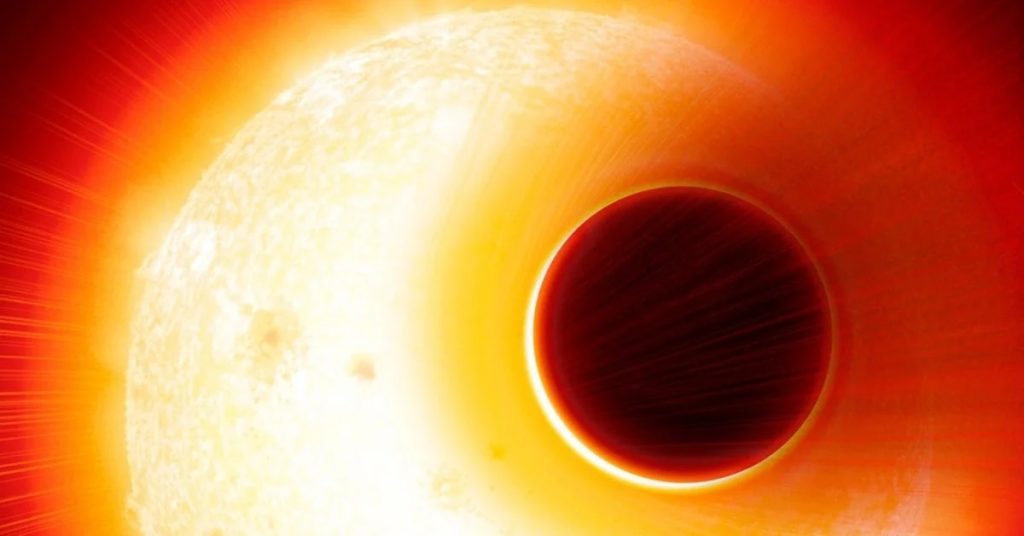the The noble space telescope Hubble continues to amaze us through more than 30 years in space. Now, identify the scientists working on it The first evidence of a magnetic field surrounding a planet outside our solar system.
Earth’s magnetic field acts as a shield against energetic particles from the sun known as the solar wind. Magnetic fields can perform similar functions on other planets. The magnetic field best explains observations of an extended region of charged carbon particles that surround the planet and travel away from it in a long tail.
Magnetic fields play an important role in protecting the atmospheres of planets, So being able to detect the magnetic fields of exoplanets is an important step toward a better understanding of what these extrasolar worlds might be like.
:quality(85)/cloudfront-us-east-1.images.arcpublishing.com/infobae/GDNJCTBCII54RA2W2ERNQRN5JI.jpg 420w)
Published in natural astronomyThe research used Hubble to observe an exoplanet HAT-P-11b, A Neptune-sized planet 123 light-years from Earth, it passes directly across the face of its host star six times in what is known as a “transit.” The observations were made in the ultraviolet light spectrum, which is beyond what the human eye can see. Hubble discovered carbon ions, charged particles that interact with magnetic fields, that surround the planet in what is known as the magnetosphere.
The magnetosphere is a region around a celestial body (such as Earth) formed by the body’s interaction with the solar wind emanating from the host star. “This is the first time that a magnetic field signature of an exoplanet has been directly detected on a planet outside our solar system,” Gilda Pallister, associate research professor at the University of Arizona’s Lunar and Planetary Laboratory (LPI) and one of the co-authors.
“A strong magnetic field on a planet like Earth can protect its atmosphere and surface from direct bombardment by energetic particles that make up the solar wind. These processes greatly affect the development of life on a planet like Earth because the magnetic field protects living organisms from these energetic particles.”
The discovery of HAT-P-11b’s magnetosphere is an important step towards a better understanding of the habitability of an exoplanet. According to researchers, not all planets and moons in our solar system have their own magnetic fields, and the connection between magnetic fields and the possibility of habitability on a planet still needs further study.
:quality(85)/cloudfront-us-east-1.images.arcpublishing.com/infobae/K7IOTQNYPVFXNFEAKBCILT2WTM.jpg 420w)
“HAT-P-11 b proved to be a very exciting target, because Hubble’s ultraviolet transit observations revealed the magnetosphere, which is seen as an ionic component scattered around the planet, and a long tail of fugitive ions.Pallister said, adding that this could be used as a general method for detecting magnetospheres on a variety of exoplanets and assessing their role in habitability.
Ballister, principal investigator for one of the Hubble Space Telescope programs that spotted HAT-P-11b, contributed to the selection of this specific target for ultraviolet studies. The main discovery was the observation of carbon ions not only in the region around the planet, but also stretches in a long tail moving away from the planet at average speeds of 150 thousand kilometers per hour. The tail reached space for at least one astronomical unit, which is the distance between the Earth and the Sun.
Read on

“Beeraholic. Friend of animals everywhere. Evil web scholar. Zombie maven.”

:quality(85)/cloudfront-us-east-1.images.arcpublishing.com/infobae/R5BNJX7RHGU5FSPXQJHMRLXVKE.jpg)





More Stories
“Without health there is nothing”
This will be the Europa Clipper probe
Why can tongue color indicate health problems according to science?